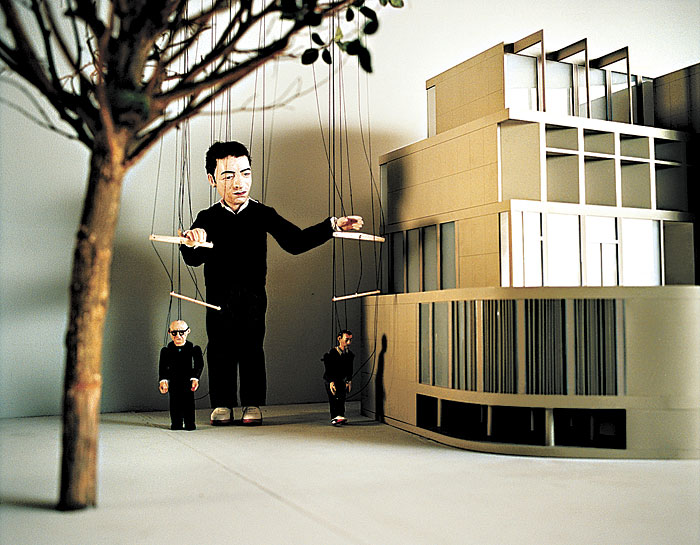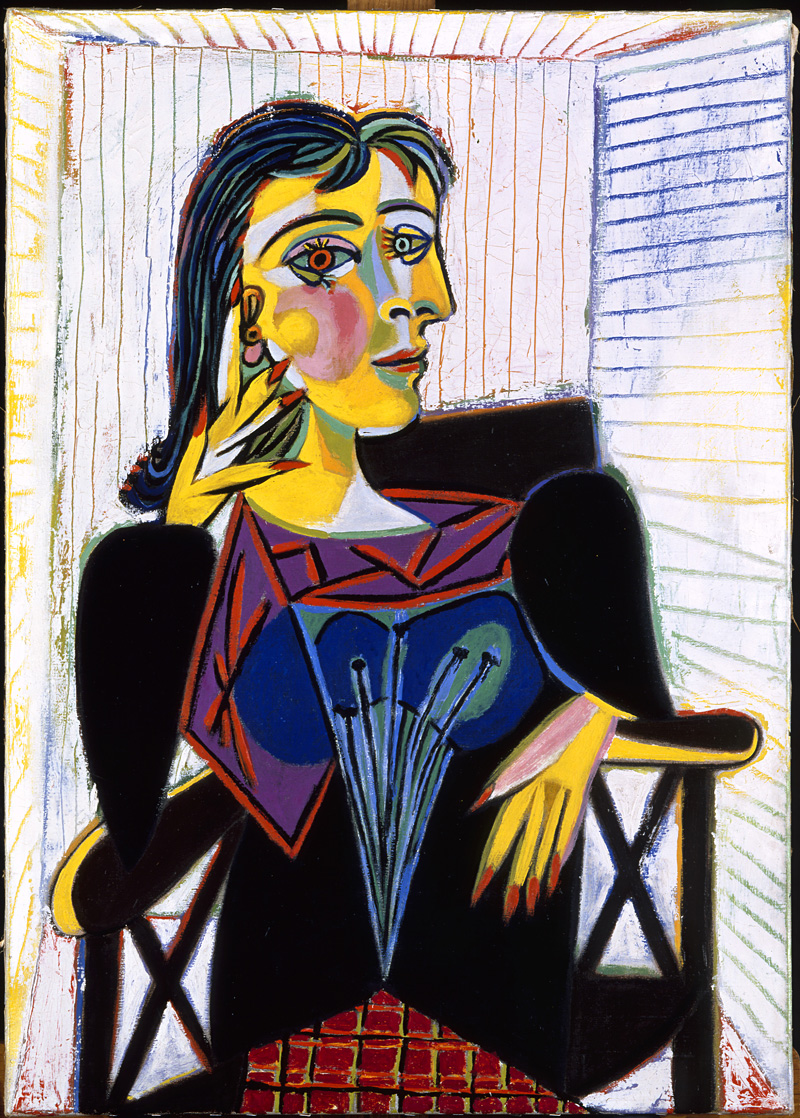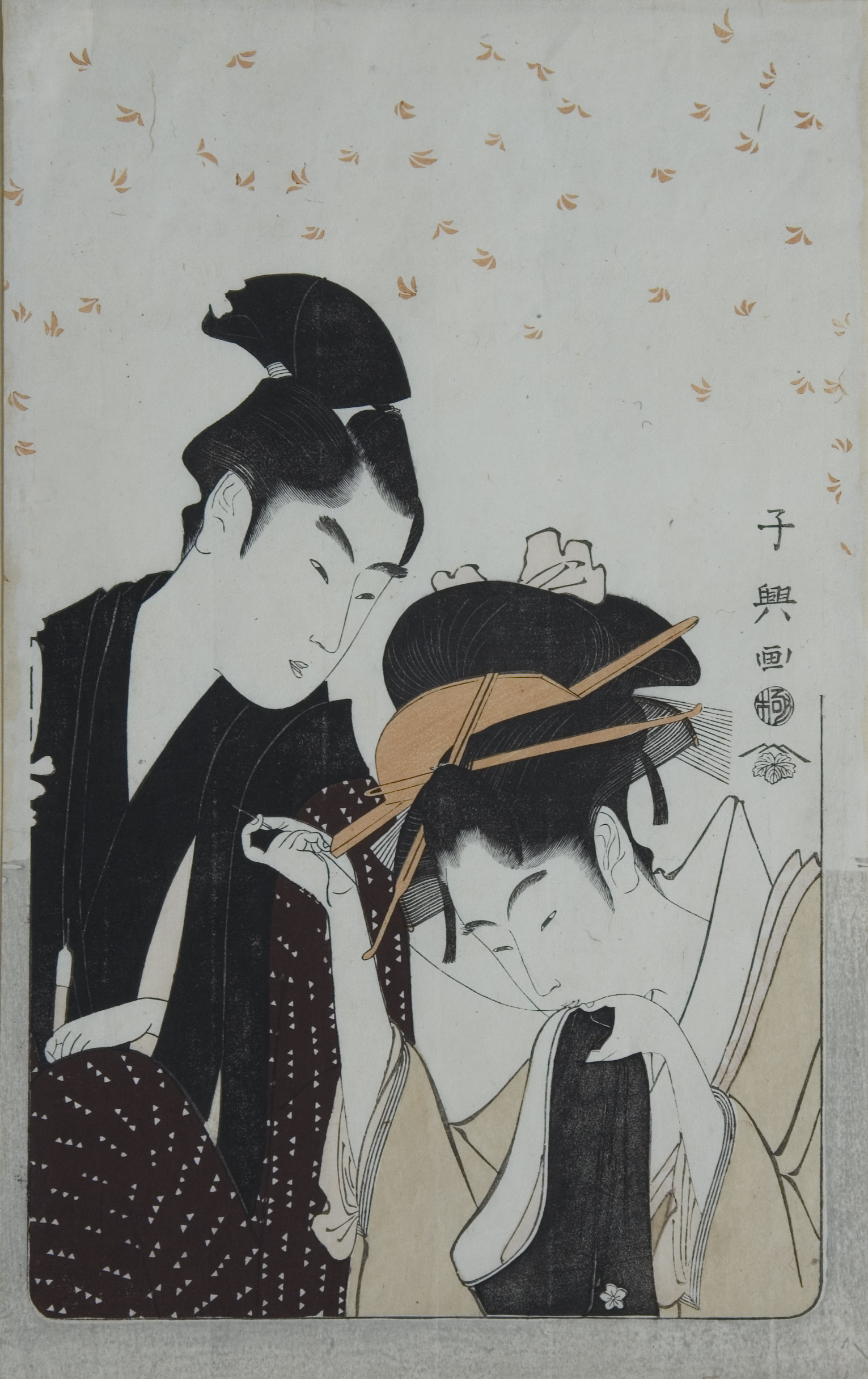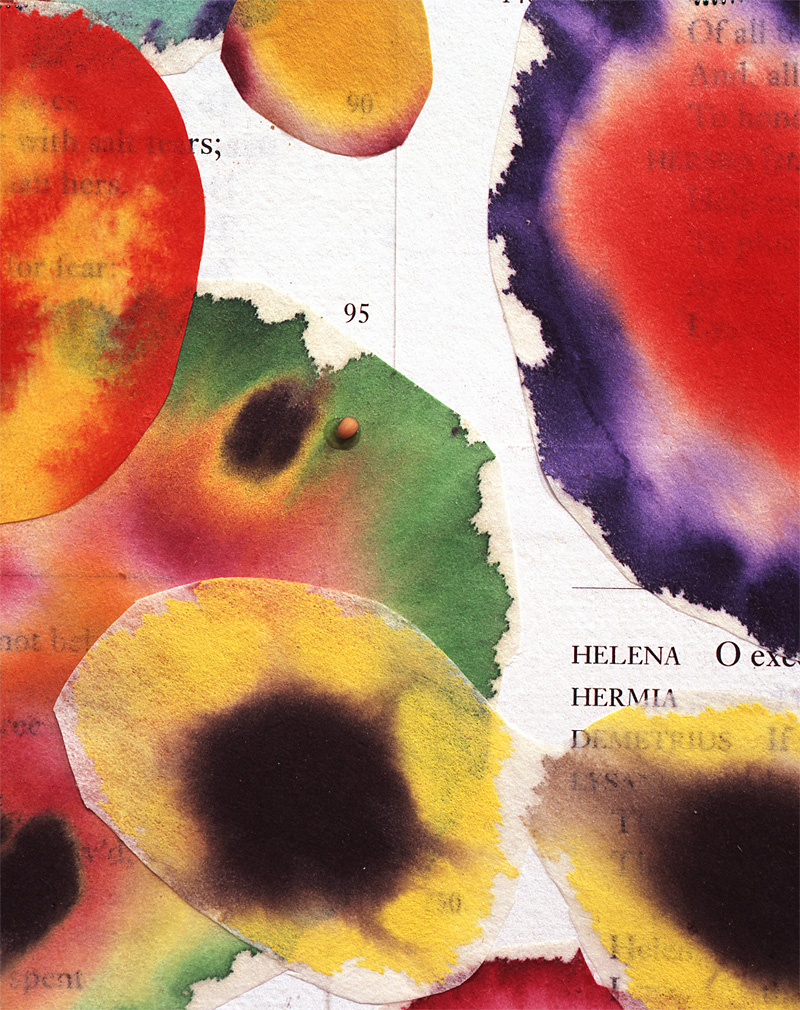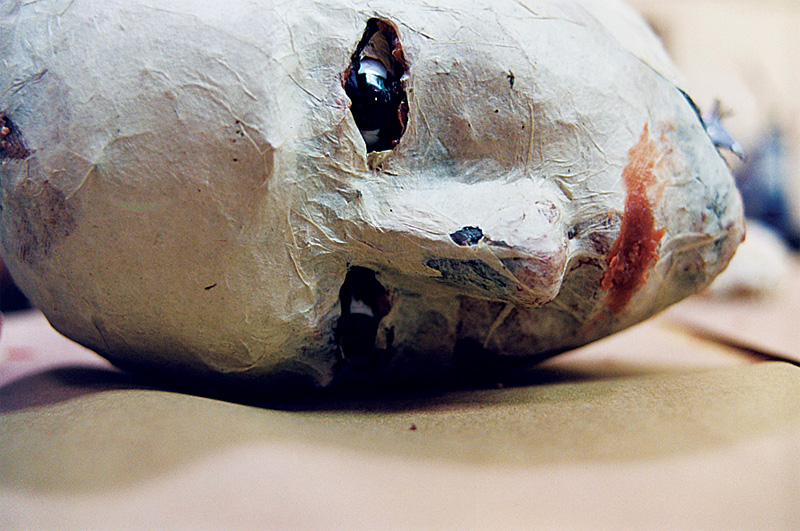The puppet exerts a strange power. It can be in our world, but remains stubbornly apart. It can talk back to fleshly power, say the unsayable, and what are you going to do—send it to Guantanamo? You can’t kill a dead thing that dances.
Thoughtful, provocative, and studded with superstars, The Puppet Show, imported from Philadelphia’s Institute of Contemporary Art and on view at the Frye Art Museum through the summer, is an attempt to get past crowd-pleasing populism to a more complex understanding of what a puppet can be.
Scale is the first key to puppet power. Puppets can be larger than life, like the massive machines of San Francisco’s famed Survival Research Laboratories, programmed to fight to the death in extravagant smackdowns (seen at the Frye on video). As miniatures, puppets may express an imbalance of power: Maurizio Cattelan’s 1997 Untitled is a tiny replica of fellow artist John Armleder in a suit with feet and hands suction-cup-stuck on a clear panel like a toy animal ornament in a car window, perhaps a jokey reference to the subject’s tenuous place in the art world.
Dennis Oppenheim’s 1974 Theme for a Major Hit comprises five marionettes, also obediently suited, and each a self-portrait of Oppenheim. Their strings hang from high above, attached to machines resembling music-box innards. A tune plays: “It ain’t what you make, it’s what makes you do it.” At odd intervals, the stilted puppets’ metal feet loudly and spastically tap-dance. Then they droop into exhausted stillness. The arcade mechanics and Bojangles-esque song-and-dance throw into relief the artist’s relationship with the art world, dealers, patrons, and his own creative impulse. Are the strings moved by inspiration or the forces of commerce?
Pierre Huyghe’s brilliant 2004 This is not a time for dreaming, a film of a live play with puppets created by L.A.’s Puppet Heap, depicts a similar struggle. Harvard commissioned the piece, and Huyghe, with an artist’s characteristic rebellion, chose as his subject that institution’s long-ago mistreatment of Le Corbusier, who designed the university’s visual-arts building and then fought the changes Harvard demanded. Each time the Le Corbusier marionette imagines his building, represented by a telescoping geometric puppet, he gets thwarted by a bureaucratic Mr. Harvard puppet and menaced by a black harbinger-of-doom puppet like an origami praying mantis.
The show’s most resonant works explore power’s complexity. In Nathalie Djurberg’s indelibly memorable video Feed All the Hungry Children, a claymation hooker walks into a shantytown, where naked children surround and undress her. She snarls at first, then sprays fountains of milk from her breasts into their many mouths. Some are fed; others drop dead. The children are both needy and overwhelming, a frightening collective organism engulfing her. Djurberg’s puppet-eat-puppet world provides no pat answers to questions of social injustice.
In Mike Kelley’s weirdly haunting sculptural tableau, suburban bedroom furniture is carefully “dressed” in tiny apparel—a sock on a bedpost, a knit infant hat on the headboard, a doll outfit squeezed in a shop vise. It suggests hidden childhood memories, fragile innocence, and imagination ruthlessly shaped by social convention. Power and powerlessness are taught, a means of survival and adaptation.
“We are all puppets, we manipulate and are manipulated,” says Annette Messager in the show’s smart catalog, illustrating the principle in her ritualistic Faire Parade. A totemic sculpture of an infant’s jumpsuit has been impaled with a school desk’s worth of sharp colored pencils and strung up by rope, its four limbs stretched and pulled. An object of sacrifice, the child seems to have been forcibly imprinted by the values of dominant culture. Meanwhile, Messager subverts the rational-secular mindset that rules the culture by presenting her puppet as a supernatural being, a creature of myth and magic.
In Louise Bourgeois’s stunning 1996 Untitled, four less-than-life-size figurative cloth sculptures hang like carcasses in a slaughterhouse. Two with limbless bodies and featureless black heads are in feminine clothes (perhaps denoting a maid and her elegant employer); another is an empty black cocktail dress; the fourth is a nylon-stocking-colored oblong shape with two lump-like breasts. Bourgeois’s Henriette (1985) is a massive bronze leg with a mini-mouse cartoon foot and an oversized thigh that looks like a giant sewing-machine part. It seems a disturbing relic, an obsolete appendage from a puppet corpse.
This is starkly original work, frighteningly primitive yet beautifully crafted. Like something vaguely recognized from a fever dream, you know what it probably is, but don’t want to get that close. Bourgeois asks who owns the body, memory, and truth, impelled by an apparently dysfunctional childhood that she won’t speak about specifically. Her sculptures possess the puppet’s ultimate power: to shriek while remaining silent.
Victoria Ellison made large-scale puppets for the Fisher Ensemble’s 2008 opera Psyche in Seattle.
